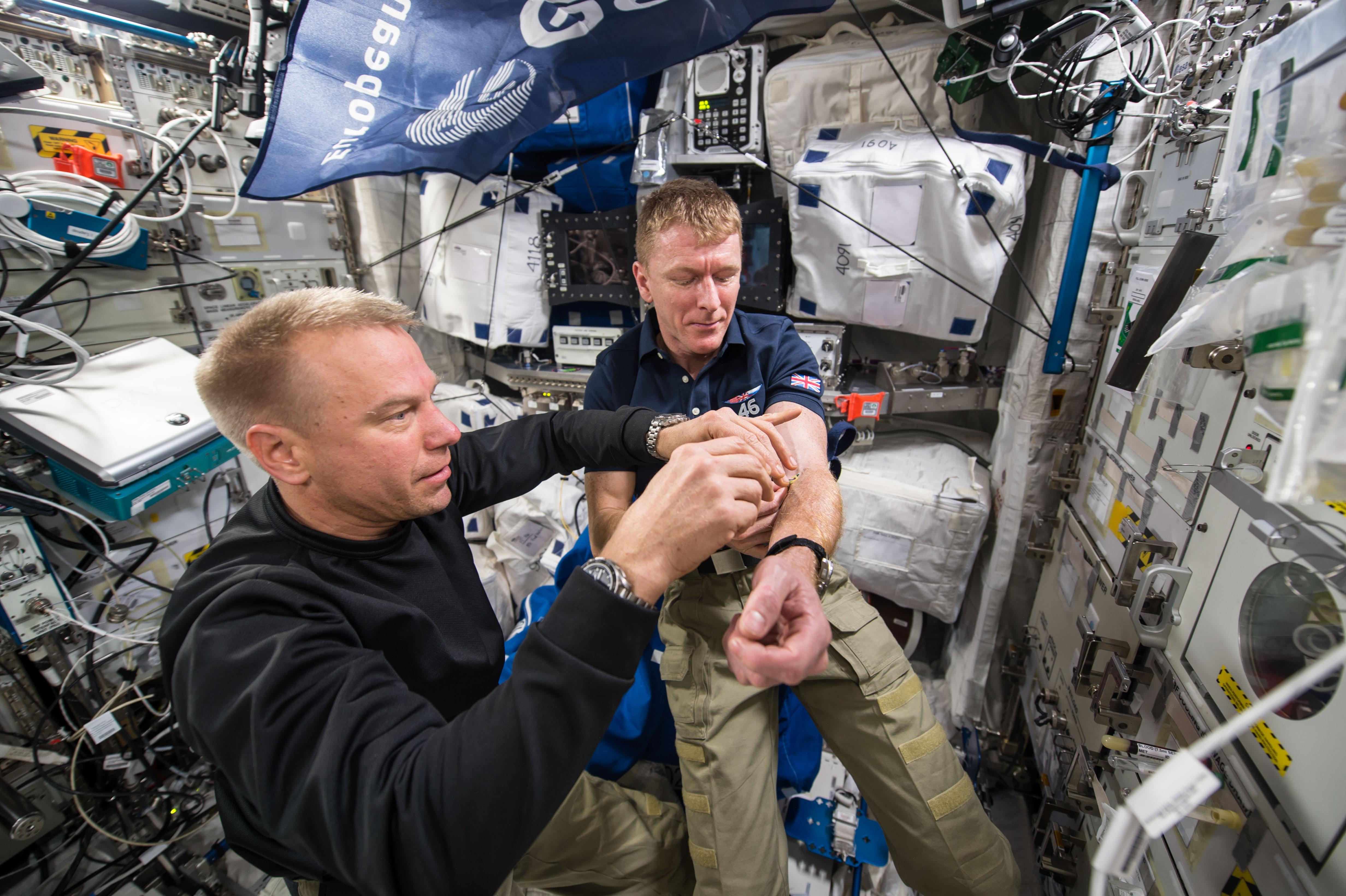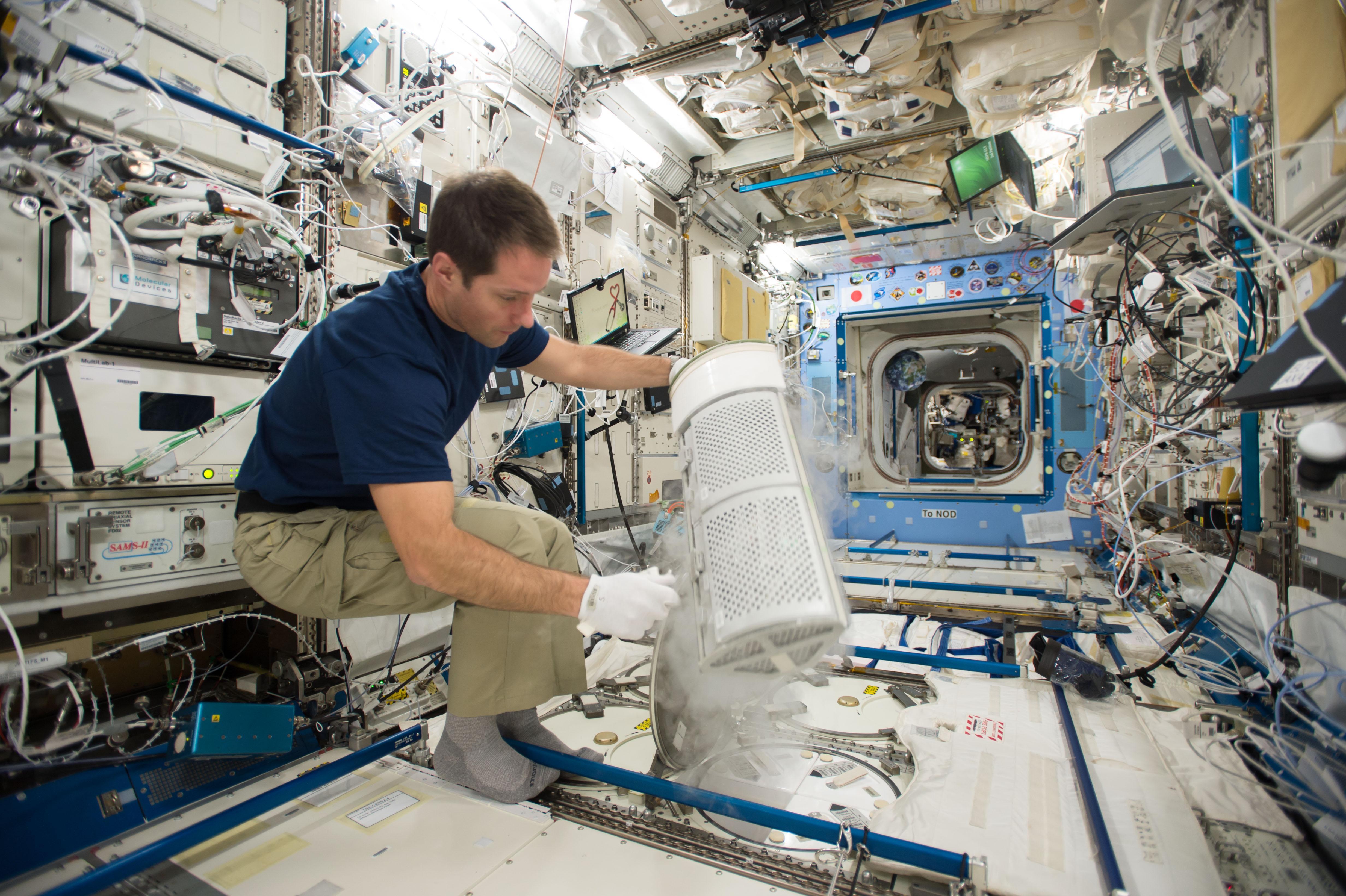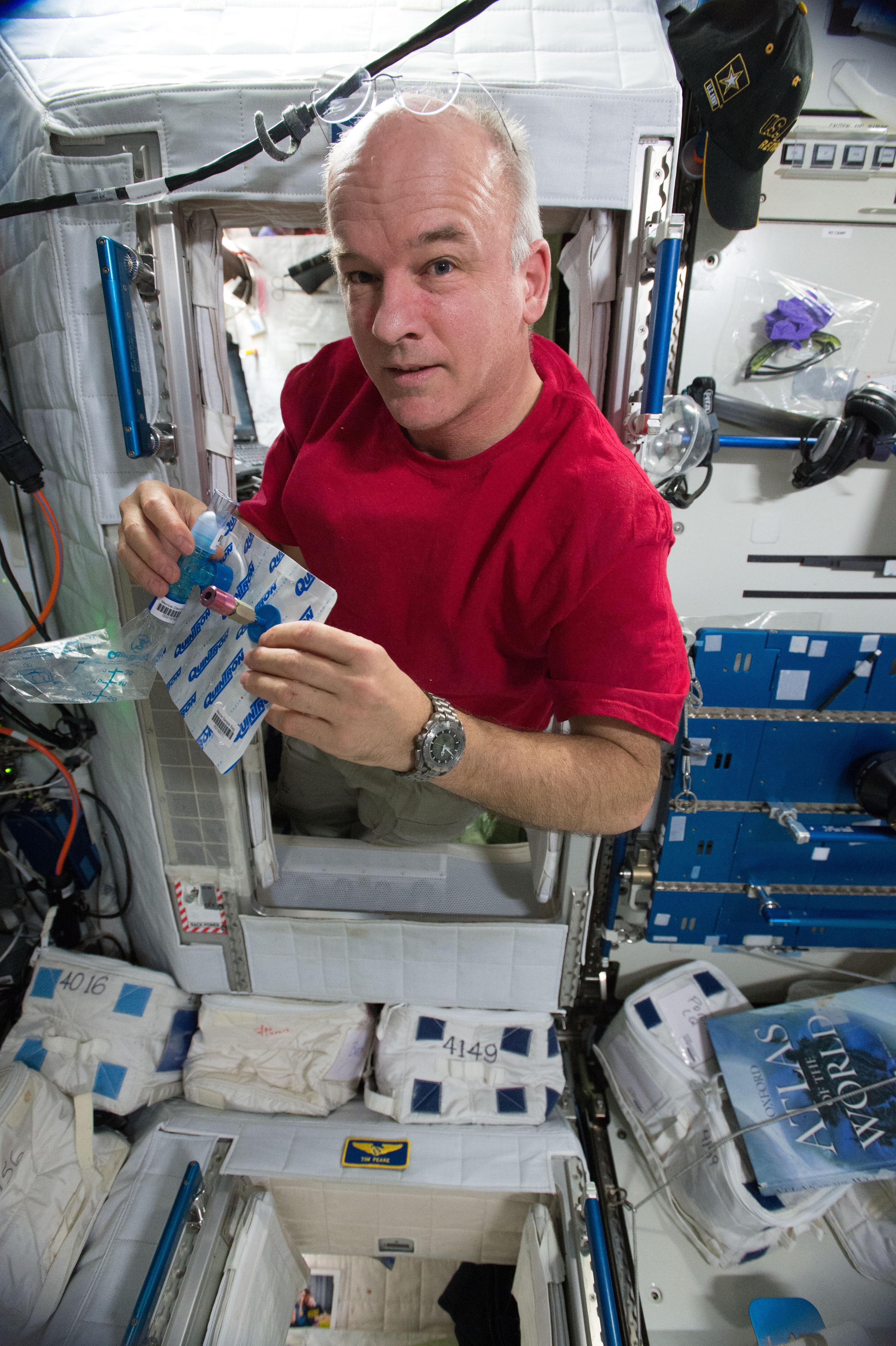Space Travel and the Human Body
"Now we know that fat cells are active and secrete substances that impact neighbouring cells such as the bone, and the blood."
"The theme of our research hasn't changed since I arrived in Ottawa more than 20 years ago. We're looking at the musculoskeletal effects of immobility. I work with rehabbing patients. They are anemic. They have weak bones, weak muscles and other complications."
"The link to an astronaut is obvious. Astronauts when they're in space have no force on their skeletons and muscles. They touch an object [while floating] and end up at the end of the hall."
"To my knowledge we're the only laboratory in the world that has developed these measures. And we've adapted them to space. Which was quite a feat. It took us two full years."
Dr. Guy Trudel, director, Bone and Joint Research Centre, University of Ottawa
 |
| NASA Image: ISS046E008882 - Astronaut Tim Kopra (left) performs blood draw on European Space Agency (ESA) astronaut Tim Peake in the Columbus module. |
Space travel may be out-of-this-world exciting, but the atmospheric medium is not conducive to human health. The lack of gravity to which all animals on Earth have been designed to accommodate themselves to, represents a direct threat to the organism which is man. Simply put, travel in space has the effect of aging the human body and while it advances that aging process the body experiences utter havoc.
While astronauts are in the long, drawn-out process of preparing for space flight they also undergo a relentless process of conditioning, a process requiring the human body to be exposed to a super-human effort to overcome the more immediate threat to the musculoskeletal challenges that the space flight experience exposes them to.
Dr. Trudel and his investigative team face a challenge of their own devising in an effort to understand fully the process taking place impacting deleteriously on astronauts' bodies and health outcomes. They compare what the astronauts undergo to what they know of bodily deterioration of long-term, bedridden, sedentary people who never leave the bonds of Earth and the gravity that keeps them there.
What the researchers are doing is measuring the impact of space travel specifically on human bone marrow. Long periods of enforced immobility tends to create a situation where bone marrow is infused with excess fat. When that excess fat takes up room on the spongy tissue within the bone we know as marrow, vital red and white blood cells find less room in the marrow, where they normally reside.
The idea then is to determine whether microgravity results in a similar impact on the bone marrow of astronauts. This close scrutiny of marrow is of recent vintage; though the condition has long been known, it was thought to be irrelevant in its outcome. An assumption dispelled by more recent studies in disabled patients which have shown that excess marrow fat has a range of issues attached to it inclusive of osteoporosis and infection susceptibility.
NASA, the world's premiere space agency, does its own studies to enlarge its knowledge base of impacts on the health of astronauts to enable it to assist astronauts in recovering from journeys into space. Dr. Trudel, a rehabilitation doctor at the Rehabilitation Centre of the Ottawa Hospital, explains why it is that NASA is interested in his team's study results.
 |
| NASA Image: ISS050E011020 - European Space Agency (ESA) Thomas Pesquet, Expedition 50 Flight Engineer (FE), during Canadian Space Agency (CSA) Generic Sample Minus Eighty Laboratory Freezer for ISS (MELFI) Insertion, in the Japanese Experiment Module (JEM) Pressurized Module (JPM). Photo taken during Expedition 50. |
Astronauts, unalike bedridden patients, have an intensive physical regimen to counteract and limit as much as possible, atrophy and anemia resulting from their space exposure. On board the International Space Station, there are treadmills and muscle resistance equipment, and they are used for up to two hours daily by each astronaut on a regular pro-active schedule. Still, with the realization that longer space trips are planned for the near future, it is also understood there will be little room for exercise equipment.
Hence the interest in Dr. Trudel's five-year MARROW project to which NASA and the European Space Agency, as well as the Canadian Space Agency have contributed financial support. Astronauts will provide marrow information before and after their flights with MRI exams establishing the fat content in their marrow. During, after and before each space mission they provide blood and breath samples for blood cell data.Samples are also collected in space and stored in thermo lab freezers.
Scientists theorize that astronauts become anemic as 15 percent of their red blood cells are destroyed while in space. The Bone and Joint research lab has developed a method of measuring precisely when a red blood cell is destroyed. In connection with and preparation for the research project, Dr. Trudel has travelled back and forth to Houston to visit NASA.
"It was moving. We were in the very room where the astronauts were after landing. They were in isolation, behind glass. Security was crazy. It's a nice atmosphere. Very dynamic. You feel you are part of something when you're at the Johnson Space Center in Houston." Googling "Canadian Space Agency" and "marrow" will take those interested to a brief video where an astronaut is shown conducting marrow tests in space.
 |
| NASA Image: ISS047E131794 - Jeff Williams, Expedition 47 Flight Engineer (FE), taking breath and ambient air samples for the Canadian Space Agency (CSA) Marrow experiment, in the Columbus Module. Photo taken during Expedition 47. |
Labels: Canada, Experiments, NASA, Research, Space Travel


0 Comments:
Post a Comment
<< Home